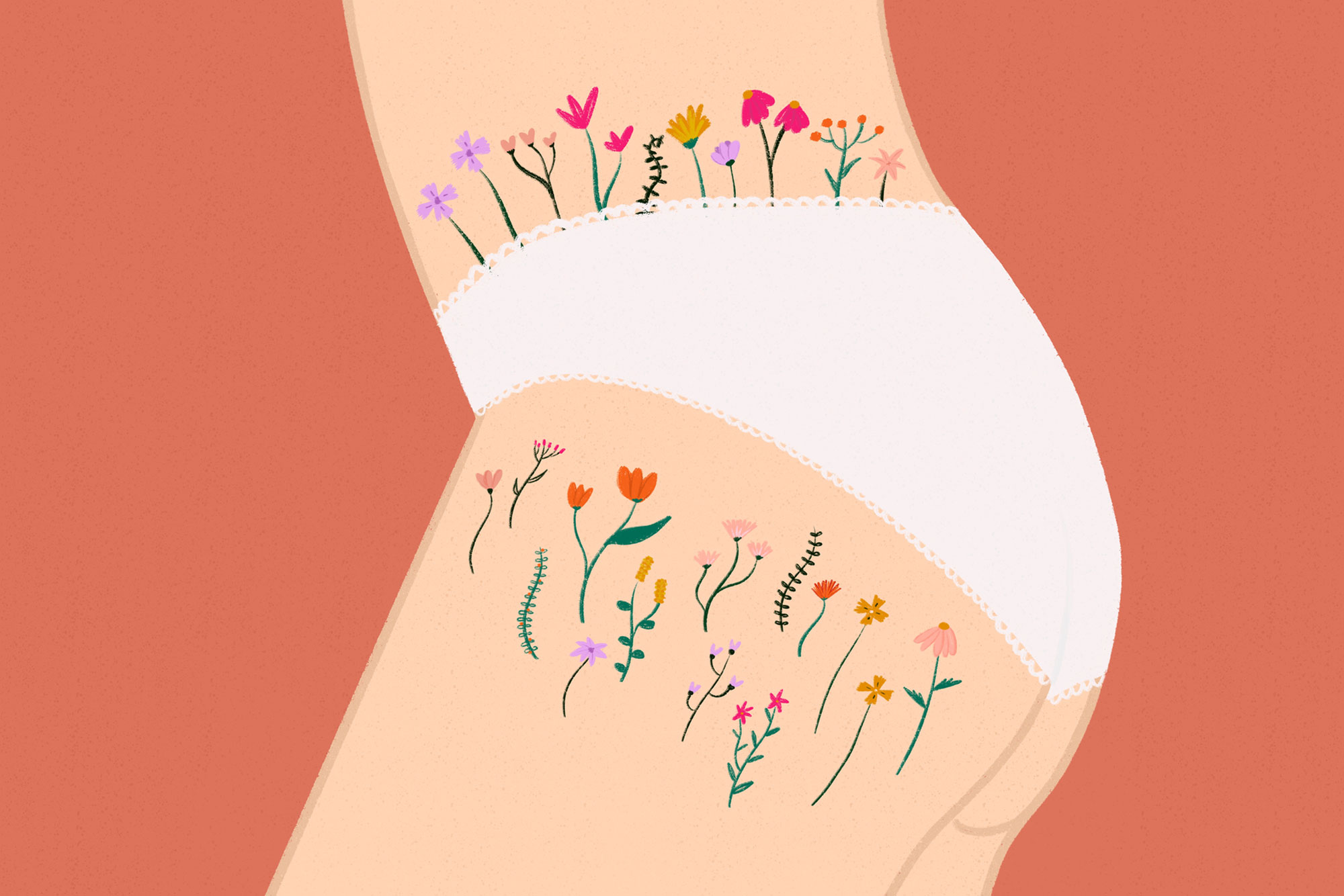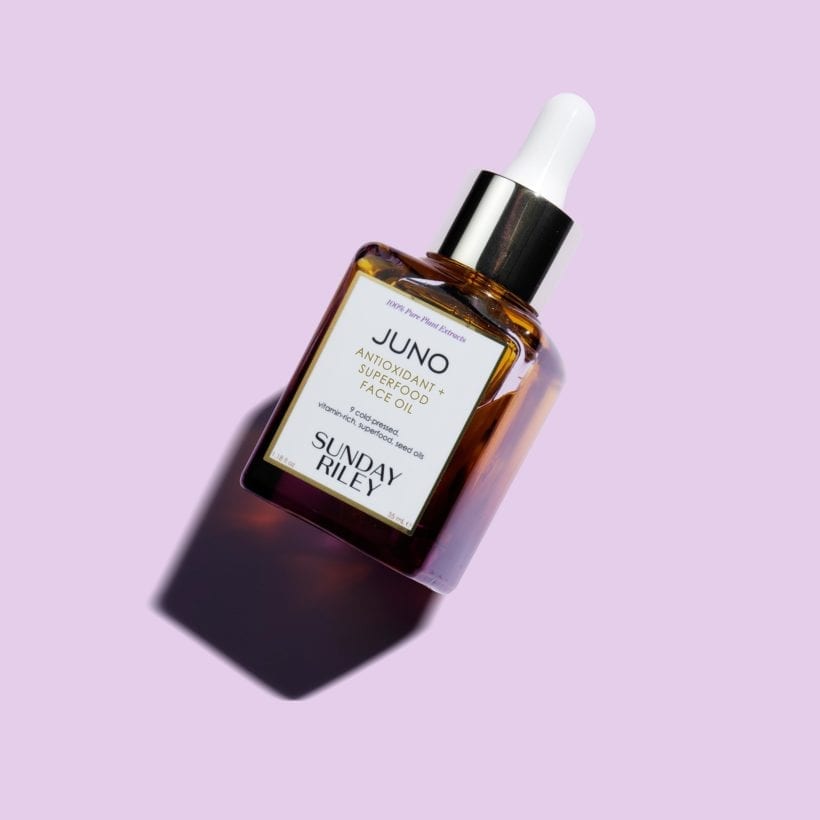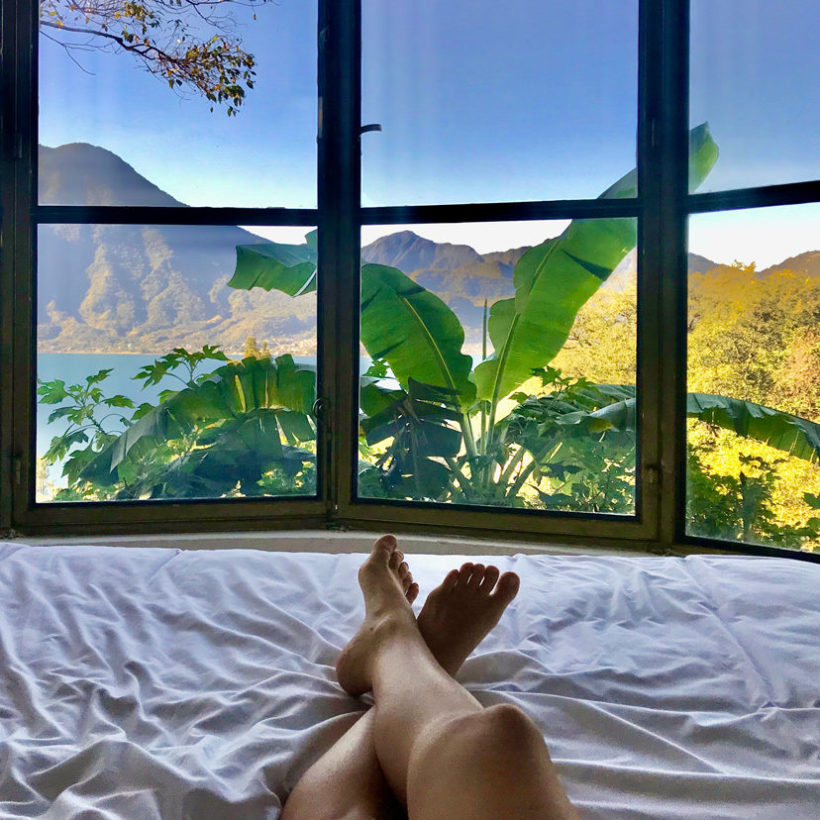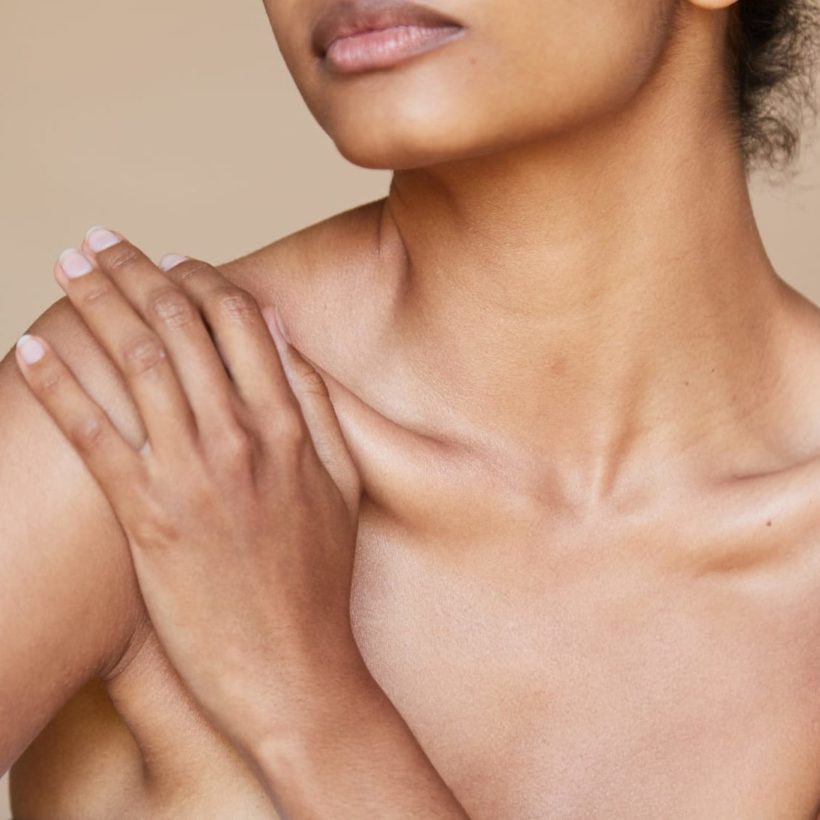When I was a teenager, sitting cross-legged in the grass, I looked down, horrified at the streaking lines that were suddenly visible across my thighs. I saw them on the back of my hips as well. My mother explained that they are stretch marks — “something all women get.” There’s more to the statistics than that. Up to 80 percent of people get stretch marks, which are technically scars from excessive stretching and rupturing of elastin fibers. They affect all racial groups, and women are two-and-a-half times more likely than men to have them. Also, they run in families, so if ma and pa had them, you’re likely to as well.
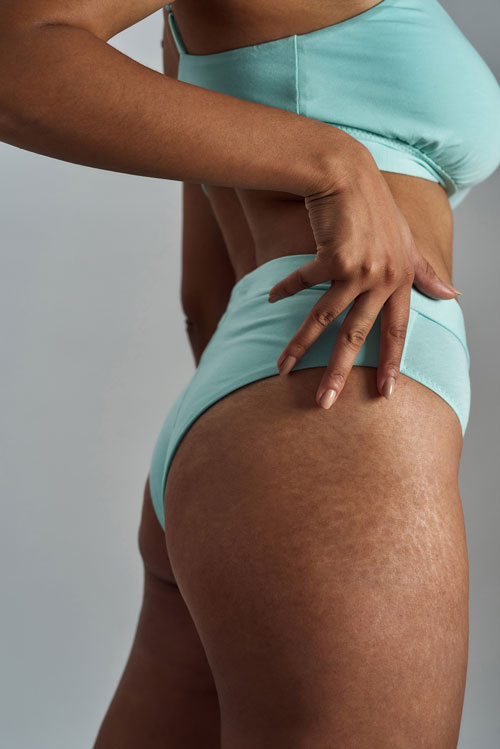
The main cause of stretch marks is rapid weight or muscle gain, though certain underlying health conditions can lead to them (such as Ehlers-Danlos syndrome and Cushing syndrome). They appear most commonly during puberty with fresh red stretch marks due to the body’s inflammatory response to the distressed skin. Pregnancy is another expected time for stretch marks to appear on the belly and breasts, with studies showing that 60 percent of participants get them. Still, other studies show as many as 90 percent of pregnant women experience stretch marks during pregnancy.
Stretch marks will look different and have a different outcome on each individual, explains Terrie Absher, licensed medical aesthetician and founder of med spa Total Glow. “Stretch marks show up as red or very dark lines, which fade with time and can become a lighter silvery hue on our bodies. Like any scar, as we age, stretch marks may become more notable as the skin around it becomes laxer, and the indentations become more pronounced.” The most common places they show up on your body are the belly, breasts, arms, thighs, and butt. Stretch marks pose no harm to our health, and we celebrate embracing them. But for those who want to minimize their appearance, here’s how.
Prevention
Though many of us would’ve gladly skipped the angsty time of puberty and the body changes that came with it, it’s part of life, and therefore, so are stretch marks that occur at this time. But there are some things you can do to prevent future ones in adulthood. Sudden weight gain can cause the skin to tear, as can sudden bulking, particularly on the shoulder/bicep area in men. Stay hydrated because the more supple the skin is, the less likely it will become tight and tear. Likewise, eat a nutrient-rich diet with vitamins and minerals that support cell structure. (Some good eats are pomegranates, berries, broccoli, mushrooms, seeds, nuts, and whole grains.)

Many women (myself included) swear by oils on the tummy and hips during pregnancy for prevention. “Gentle massage with any oil as the belly grows can help the skin minimize the trauma from rapid stretching of skin that subsequently causes stretch marks,” says Dr. Paul Jarrod Frank, N.Y.C. dermatologist and author of The Pro-Aging Playbook. He advises starting this daily practice at 20 weeks into the pregnancy.
And if you do see those red lines starting to form, act fast with one of the below treatments — they’re much easier to treat when they first show up than further down the road.
Unfortunately, there’s little-to-no scientific evidence to support any products that prevent stretch marks. If you see something marketing itself as “stretch mark prevention,” don’t be duped.
At-Home Treatments
Overall, studies have shown that most over-the-counter stretch mark treatments don’t do much to resolve the issue. “There are no effective at-home treatments for stretch marks,” explains Dr. Frank. “A stretch mark is like an acne scar, with the damage below the skin, so there is nothing that can be done topically.” There is limited data to suggest that retinol (vitamin A) can help by improving collagen production. But Dr. Frank asserts that “Over-the-counter retinoids are not strong or effective enough for stretch marks and can cause irritation.” Caution: Retinoids shouldn’t be used during pregnancy or breastfeeding without a doctor’s consent.
Hyaluronic acid has been shown to improve elastin, so it holds promise for stretch marks, as does Centella Asiatica (an herb), known for promoting collagen production. These, found in many skincare products, may be worth trying on your marks.
Another one is aloe vera, taken straight from the plant. There isn’t much research to support it, but users claim it helps calm the area and make stretch marks less visible, and since this is a harmless, inexpensive remedy, why not give it a go.
It won’t minimize stretch marks, but a self-tanner can fill in the silvery-white discoloration when stretch marks have “settled in” over the years, making it less noticeable.
Professional Treatments

Lasers, microneedling, and medical LED light therapy are three in-office treatments that have shown to be the most effective remedies for these scars. For new marks that are still in the red stage (i.e., haven’t faded to silvery white), Dr. Frank uses the VBeam Laser to address the redness of the skin. “VBeam laser directs pulses of light energy at the blood vessels, which alleviates the red pigmentation,” he explains. “It can reduce the redness, improve the texture and slow down the scar’s progression in its tracks.” On average, each treatment costs between $400 and $800, and the number of procedures required depends on the individual’s needs and skin tone. Dr. Frank uses Fraxel Restore laser on scars that are older and have turned white. He can get rid of 80 to 90 percent of the scars using this method, done in two to five treatments. The cost for each treatment varies greatly among practices, with a range of $300 to $1,200 and up. What about recovery after a laser treatment? Absher says there is no downtime for covered areas and two days’ downtime for exposed areas.
Microneedling might be the best option for some, as it can be done on all skin colors and types. “This treatment combines radiofrequency and microneedling to deliver focused energy to precise depths in the skin and stimulate collagen production exactly where needed,” explains Dr. Frank. Absher says she has seen particularly “incredible” results on the stomach, hips, and thighs using microneedling. Again, the price for microneedling has a wide range — from $200 to $900, depending on your needs and the practice or medical spa in your area. Downtime is minimal, with redness disappearing after a day or two when all normal activities can be resumed.
Like microneedling, Absher says medical LED light therapy can also help build collagen. “And if combined with certain non-invasive treatments, the skin can regain health and tone.” It’s a 20-minute, in-office treatment that costs between $50 and $200.
Though many of us learn to live with our stretch marks, as they are a normal part of being a human, if you are determined to remedy yours, try one of the above at-home fixes or visit a qualified, licensed, and reputable professional who can discuss treatment options to suit you.
We only recommend products we have independently researched, tested, and loved. If you purchase a product found through our links, Sunday Edit may earn an affiliate commission.
